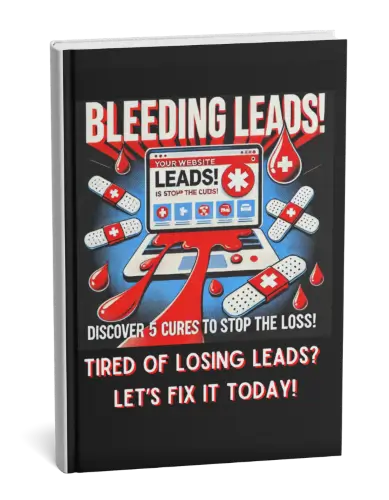
Patients and families rely on health websites for guidance. A trustworthy design builds confidence, reduces anxiety, and supports informed decisions.
Clear navigation, transparent messaging, accessible content, HIPAA/ADA compliance, and professional branding all contribute to trust.
By making websites both credible and compassionate, health providers strengthen patient relationships, encourage engagement, and create a digital space that truly heals.
“The good physician treats the disease; the great physician treats the patient who has the disease.” — William Osler
I was reviewing wellness retreat websites with a potential client when she said something that changed my perspective forever: “This site makes me feel more stressed just looking at it.”
She was right. The irony was painful, a stress-reduction retreat with a website that induced anxiety.
After analyzing 10+ wellness and health-focused websites last quarter, I discovered a troubling pattern: Organizations dedicated to healing were creating digital experiences that did the opposite.
They were so focused on listing services and credentials that they forgot the most important element, making visitors feel safe, understood, and welcome.
But health and wellness websites have a unique opportunity. They can begin the healing process the moment someone lands on the page.
When someone searches for health information or a healthcare provider, they’re often scared, stressed, or in pain. The last thing they need is:
Yet that’s exactly what most healthcare websites deliver.
Trust in healthcare isn’t built through credentials alone. It’s built through:
1. Immediate Clarity – Patients need to know within seconds: Can you help me? How do I reach you? What should I expect?
2. Emotional Validation – Acknowledge the human behind the health condition. Use language that says “we understand this is hard.”
3. Accessible Design – If your site isn’t accessible to people with disabilities, you’re literally turning away patients who need you most.
4. Transparent Process – Mystery breeds anxiety. Show patients exactly what happens next, from booking to billing.
Here’s my proven approach to building healthcare websites that actually heal:
Start with Stories, Not Services
Instead of listing procedures, share patient journeys. Real stories (with permission) build trust faster than any credential.
Design for the Anxious User
Prioritize Plain Language
Medical jargon is a barrier. Every term should be explained in words a stressed patient can understand. Create a glossary if needed, but lead with clarity.
Make Booking Frictionless
The path from “I need help” to “I have an appointment” should be:
Show Your Humanity
Real photos of real staff with real smiles. Include brief, warm bios that go beyond credentials. Patients choose providers, not just practices.
Traditional web metrics miss the point in healthcare. Instead of just tracking conversions, measure:
A university health services site saw similar transformations:
But here’s what really matters: One student wrote, “For the first time, seeking help didn’t feel scary. The website made me feel like they already cared about me.”
That’s when you know your design is doing more than converting, it’s actually beginning the healing process.
If your healthcare website isn’t actively reducing patient anxiety and building trust, it’s time for a redesign. Start here:
When we design with trust and empathy at the center, we create digital experiences that honor the vulnerability of seeking care.
Because sometimes, the first step toward healing is simply feeling understood.
Ready to transform your healthcare website from a digital brochure into a beacon of trust?
Let’s talk about building something that truly serves those who need you most.
“Wherever the art of medicine is loved, there is also a love of humanity.” — Hippocrates

Frances Naty Go, Founder of Goldlilys Media, transforms websites into strategic masterpieces for museums, nonprofits, health & wellness brands, higher education, life sciences, travel companies, personal brands and small businesses. With a Computer Science degree from UC San Diego, she specializes in creating digital experiences that educate, engage, and inspire action. Ready to make your digital presence unforgettable?





